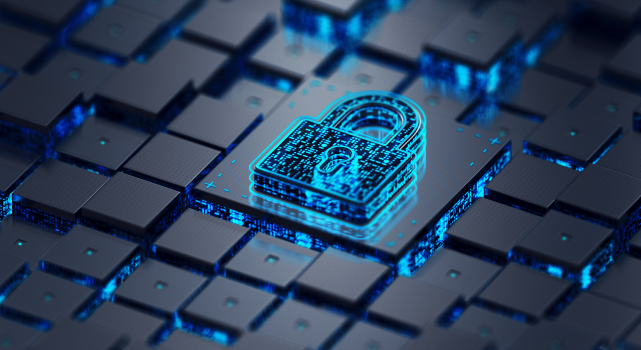Zero-trust cybersecurity strategy with simplicity and risk reduction at the heart is mandatory to reduce exponential cyber attacks in 2023.
With digital transformation accelerating in the form of a growing hybrid workforce, continued migration to the cloud, and the transformation of security operations, taking a Zero Trust approach has never been more critical. If done correctly, a Zero Trust architecture results in higher overall levels of security, but also in reduced security complexity and operational overhead.
Geopolitical strife will be the genesis of continued cyber threats
GlobalData analysts offer their views of what 2023 holds for cybersecurity. There will be no let-up from the cybersecurity threat in 2023 and beyond. Geopolitical strife, especially the Russia-Ukraine war, will be the genesis of continued cyber threats, and we will see continued ransomware attacks, possibly fuelled by artificial intelligence (AI).
This will put under-resourced corporate cybersecurity teams under constant pressure. Curbing the payment of ransoms will eventually lead to fewer attacks, but that will take time.
Despite fears of wide-ranging cyberattacks in the future, there is some light at the end of the tunnel. 2023 will be the year many organizations’ maturity levels when it comes to the adoption of zero-trust security architectures increases.
David Bicknell, Principal Analyst, Thematic Intelligence at GlobalData
In 2023, analytics will also see wider use of passkeys as a replacement for passwords, and, following the conviction of Uber’s former chief information security officer (CISO) Joe Sullivan for failing to report the company’s 2016 data breach, a greater focus on the responsibilities of a CISO’s role (see 5 Most Important Cybersecurity Controls).
What is Zero Trust cybersecurity?

Zero Trust is a strategic approach to cybersecurity that secures an organization by eliminating implicit trust and continuously validating every stage of a digital interaction. Rooted in the principle of “never trust, always verify,” Zero Trust is designed to protect modern environments and enable digital transformation by using strong authentication methods, leveraging network segmentation, preventing lateral movement, providing Layer 7 threat prevention, and simplifying granular, “least access” policies.
Zero Trust was created based on the realization that traditional security models operate on the outdated assumption that everything inside an organization’s network should be implicitly trusted.
This implicit trust means that once on the network, users – including threat actors and malicious insiders – are free to move laterally and access or exfiltrate sensitive data due to a lack of granular security controls.
A zero-trust approach to security

A zero-trust approach to security should give organizations better long-term damage limitation, even in the face of a feared catastrophic cyberattack by 2025. This ensures all access to corporate applications is verified and authorized, strengthening defenses against attack. In some cases, a zero-trust officer will be appointed to coax, cajole, and bully companies on their zero-trust journey.
With a global recession looming in 2023, companies must control costs. Mass lay-offs are becoming commonplace across the tech industry, with Salesforce and Amazon announcing significant job cuts in the first week of 2023.
Sarah Coop, Analyst, Thematic Intelligence at GlobalData
Despite cost control, proactive cybersecurity should remain a strategic priority for all companies as we enter global economic downturn (see How to Reduce the Impact of Cybercrime?). Preventative measures are more critical than ever for organizations to stay ahead of potential threats.
More security doesn’t always mean more secure
According to IBM research, the average cost of a data breach in 2022 was $4.4 million, up 3% from 2021. Investing in preventative cybersecurity can reduce costs in the long run. Companies should increase cybersecurity budgets in the face of a recession to avoid costly attacks.
According to GlobalData forecasts, companies spent over $156 billion on security solutions in 2022. This will increase to over $171 billion in 2023.
However, organizations still find it hard to protect their IT infrastructure. Companies must have full visibility of their IT estate, including third-party vendors, and test for vulnerabilities, to mitigate and prevent the cyberattack risk (see Cybersecurity Insurance Market Size Forcast).
GlobalData’s discussions with security heads and CISOs over the last two years indicates that, as enterprise digital transformation accelerates in parallel to cyber threats, the practicality of decisions around cybersecurity and networks will be challenging for enterprises in the next two years.
In particular, there will be greater involvement of the enterprise senior executive team in relation to security and how security measures translate to positive business outcomes, positive revenue, and overall limit enterprise risks. Therefore, its mandatory that CISO strategies utilize the foundations of business benefits gained and risk reduction.
Cybersecurity vendor engagement model need to change

Based on GlobalData’s discussions with enterprises, the traditional cybersecurity vendor engagement model will have to change in the future to create market relevancy and be effective in tackling cybercrime in vertical sectors like in financial, pharma, manufacturing, and government.
Vendors will need to engage and serve the IT and CISO functions within an organization, to embed themselves and their capabilities in the client risk management decision process around corporate objectives and the role security plays in that chain.
Vendors will also need to align cybersecurity to business priorities, often working from the top down with different teams in a client organization outside the IT function in mapping out how a cybersecurity strategy will support business unit outcomes and business plans.
Lastly, there will need to be greater focus in centralizing teams across security within an enterprise, as well as highlighting to security vendors the need for simplification, unification, and standardization when it comes to cybersecurity.
This will be fundamental for corporates, as we see an exponential rise in cyber attacks. We are believe that, for investors, the market will provide strong overall growth in cybersecurity—particularly when investing in cloud and network security, and particularly security products and services aligned to secure access service edge (SASE), zero trust architectures (ZTA), extended detection and response (XDR), security information and event management (SIEM), and identity and access management (IDM) solutions.
There is a simmering level of frustration among security professionals that, despite important strides in security technology, they still can’t keep ahead of the threat volume.
Amy DeCarlo, Principal Analyst, Global IT Hosted and Managed Services at GlobalData
The move to hybrid work operations has presented cybercriminals with an opportunity they have been quick to exploit. Although there has been considerable work done in areas such as endpoint detection and response (EDR) to close some security gaps, hackers are finding ways to navigate around protections.
Integrating cybersecurity into network services

In 2023, GlobalData expects to see more concerted efforts around integrating security into network services through wider Secure Access Service Edge (SASE) technology deployments—even as organizations grapple to understand exactly what constitutes SASE.
Zero Trust Architecture implementations will also gain more traction as organizations seek to mirror work already done by entities such as the US Federal Government, which is in the midst of a multi-year migration to deploy a Zero Trust Architecture.
However, ongoing geopolitical tensions and related threats from both state-sponsored actors and related organized cybercrimnals continue to loom large as organizations try to mount effective defenses against hackers.
…………………………
AUTHORS: David Bicknell – Principal Analyst, Thematic Intelligence at GlobalData, Sarah Coop – Analyst, Thematic Intelligence at GlobalData, Rajesh Muru – Principal Analyst, Global Enterprise Cyber Security Leadat GlobalData, Amy DeCarlo – Principal Analyst, Global IT Hosted and Managed Services at GlobalData



 by
by 




